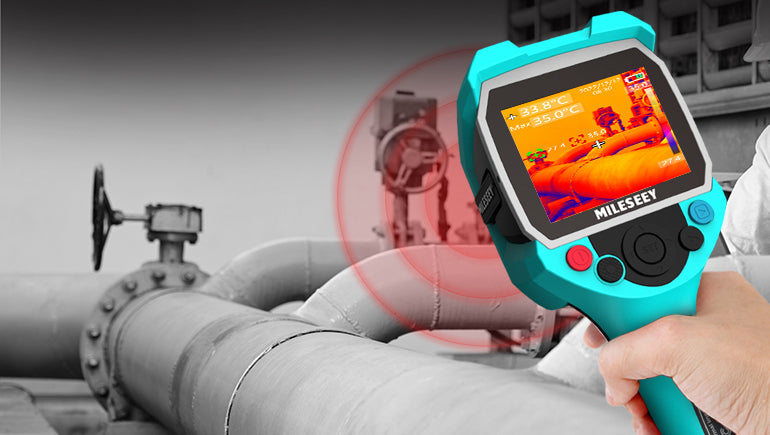Stop Major Issues with Very Early Water Leak Detection and Trigger Repairs
Cutting-edge Solutions for Early Detection of Water Leaks in Buildings and Infrastructure
As the stability of structures and framework is paramount, the challenge of very early detection of water leakages has actually stimulated ingenious options that assure to reinvent the means we protect against potential problems. From advanced leakage discovery modern technologies to the release of IoT sensing units for real-time monitoring, the landscape of leak prevention is evolving swiftly. Artificial intelligence algorithms offer a glance into the future of leakage prediction, while thermal imaging offers a non-intrusive approach for pinpointing surprise leaks. Automated water circulation evaluation systems are improving how leaks are determined and attended to, leading the method for a proactive method to water leak detection. Each of these remedies holds the crucial to making sure the reliability and long life of our built setting, prompting a shift towards a much more lasting and effective future.
Advanced Leakage Discovery Technologies
Advanced leakage detection modern technologies, geared up with advanced sensing units and algorithms, play an important function in promptly determining and identifying water leaks in various setups. Electromagnetic sensors can identify modifications in electro-magnetic areas created by water, supplying yet an additional layer of leakage detection capability.

IoT Sensors for Real-Time Tracking
In the realm of modern-day water leak discovery, the assimilation of IoT sensing units for real-time monitoring represents an essential advancement in boosting proactive leakage detection capacities. These sensing units use constant surveillance of water supply, providing real-time data on water flow rates, stress variants, and temperature level adjustments. By leveraging IoT technology, these sensors can find even the smallest abnormalities in water usage patterns, making it possible for very early recognition of possible leakages before they intensify right into major problems.
IoT sensors send information to a centralized platform, where sophisticated formulas evaluate the info and generate notifies or notifications when irregularities are spotted. This real-time surveillance capability allows homeowner or facility managers to promptly address leakages, minimizing water damages, decreasing repair expenses, and preserving water resources.
In addition, IoT sensors can be incorporated with building management systems, enabling automated feedbacks to identified leakages, such as turning off water shutoffs or activating pumps to reduce the impact of leaks. Generally, the implementation of IoT sensors for real-time tracking significantly boosts the efficiency and efficiency of water leakage detection in buildings and infrastructure.
Artificial Intelligence Algorithms for Leakage Forecast

One key advantage of using equipment learning for leakage prediction is its capacity to constantly learn and enhance its precision with time. As even more data is accumulated and fed right into the algorithm, it can refine its predictions and adapt to changing conditions, eventually increasing the reliability of leak discovery systems.
Additionally, equipment discovering formulas can aid in identifying subtle signs of leakages that may go undetected by traditional tracking approaches. water leak detection. By Continue evaluating intricate information collections in real-time, these formulas can provide very early warnings and alerts, enabling timely intervention and preventative upkeep to mitigate prospective water damages and linked prices
Making Use Of Thermal Imaging for Leakage Detection
Thermal imaging technology provides an appealing approach for spotting water leakages in numerous systems and facilities. By making use of infrared radiation and temperature variances, thermal imaging video cameras can identify covert leaks that are not quickly visible to the naked eye.
One of the crucial benefits of thermal imaging for leakage detection is its non-intrusive nature. Generally, the usage of thermal imaging modern technology boosts the efficiency and precision of water leakage detection, making it a valuable device for maintaining the integrity of structures and infrastructures.
Automated Water Circulation Evaluation Systems
Exactly how can automatic water circulation analysis systems revolutionize the discovery and administration of leakages in various systems and facilities? Automated water circulation evaluation systems use an aggressive method to leakage discovery by constantly keeping track of water circulation rates and patterns. By establishing baseline data, these systems can swiftly determine discrepancies that may indicate a leakage, making it possible for punctual treatment to avoid comprehensive damage.
These systems use sophisticated formulas to assess real-time data and give immediate informs when anomalies are discovered, permitting quick activity to be taken. In addition, computerized water circulation evaluation systems can be integrated with structure management systems or IoT platforms, enhancing overall efficiency and allowing remote surveillance capabilities.
Moreover, the data accumulated by these systems can be utilized for predictive upkeep functions, helping click for source to recognize possible weak factors in the framework prior to leakages happen. Overall, the application of computerized water flow evaluation systems can considerably improve leak discovery and monitoring practices, eventually causing cost savings, decreased water wastage, and increased sustainability in structures and infrastructure.

Verdict
Finally, the assimilation of innovative leak discovery modern technologies, IoT sensing units, artificial intelligence algorithms, thermal imaging, and automatic water circulation analysis systems supplies ingenious services for very early discovery of address water leaks in structures and facilities. These technologies enable real-time surveillance, forecast of leakages, and effective detection approaches to avoid water damage and waste. Applying these options can assist in preserving the stability and sustainability of water systems in different settings.